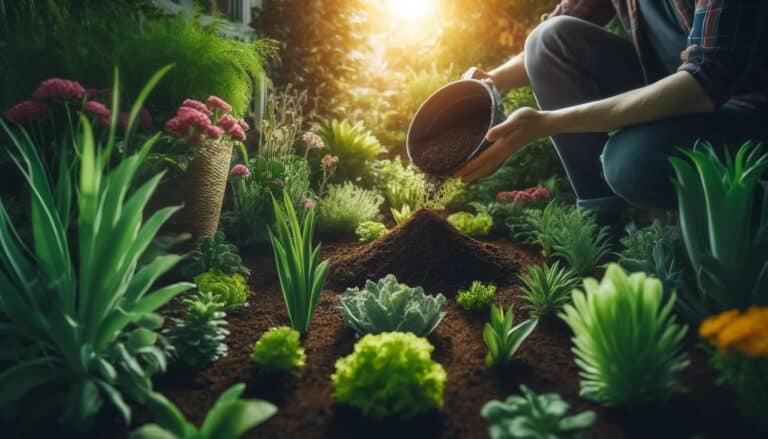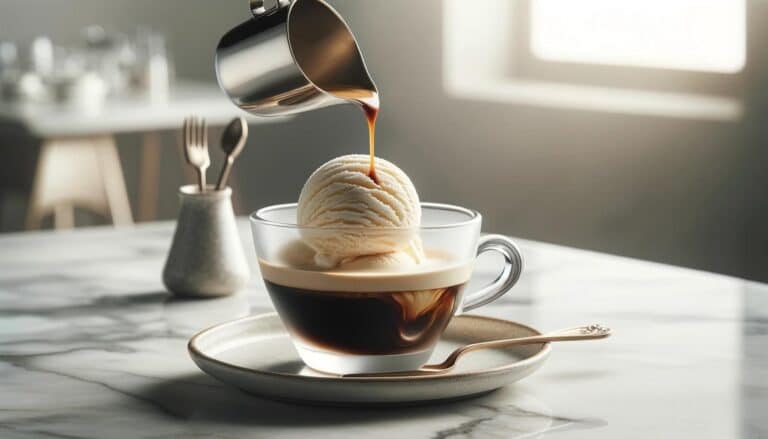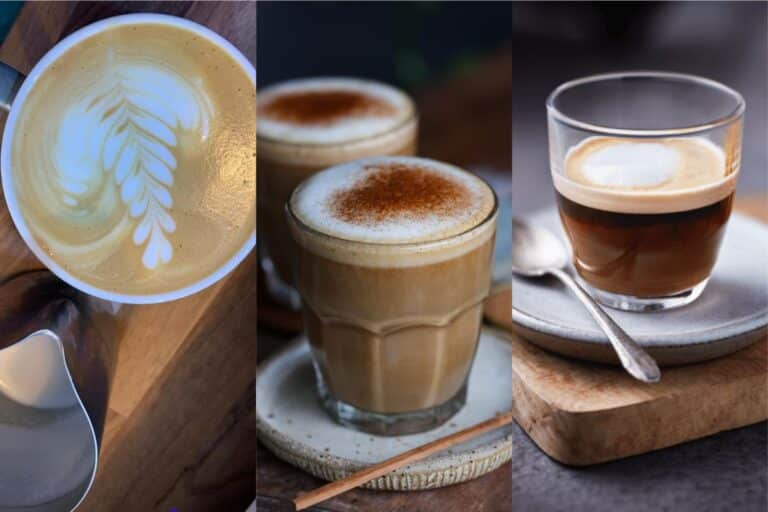Coffee stands as one of the most beloved beverages worldwide, with its rich aromas and energizing qualities making it a staple in many cultures. Every day, millions of people start their morning with a cup of coffee, and its consumption continues to grow globally. However, when it comes to determining the “best” coffee, the answer is inherently subjective, influenced by a complex tapestry of personal taste, cultural significance, and individual experience.
The quest to find the ideal cup of coffee varies dramatically from one person to the next, shaped by several key factors:
- Flavor Profile: Coffee offers a wide range of flavors, from bold and bitter to smooth and sweet. The beans’ origin, variety, and roast all contribute to the flavor profile, which can include notes of fruits, nuts, chocolate, or spices.
- Preparation Method: The way coffee is brewed has a significant impact on its taste and strength. Options range from the quick and intense espresso to the delicate and nuanced pour-over, with each method extracting different qualities from the beans.
- Origin of Beans: The geographical region where coffee is grown affects its flavor profile. Factors like altitude, climate, and soil type in regions from Colombia to Ethiopia play a critical role in shaping the characteristics of the coffee.
By exploring these aspects, this article aims to provide a deeper understanding of what can influence coffee preferences and how these preferences inform opinions on the best type of coffee.
Understanding Coffee Beans
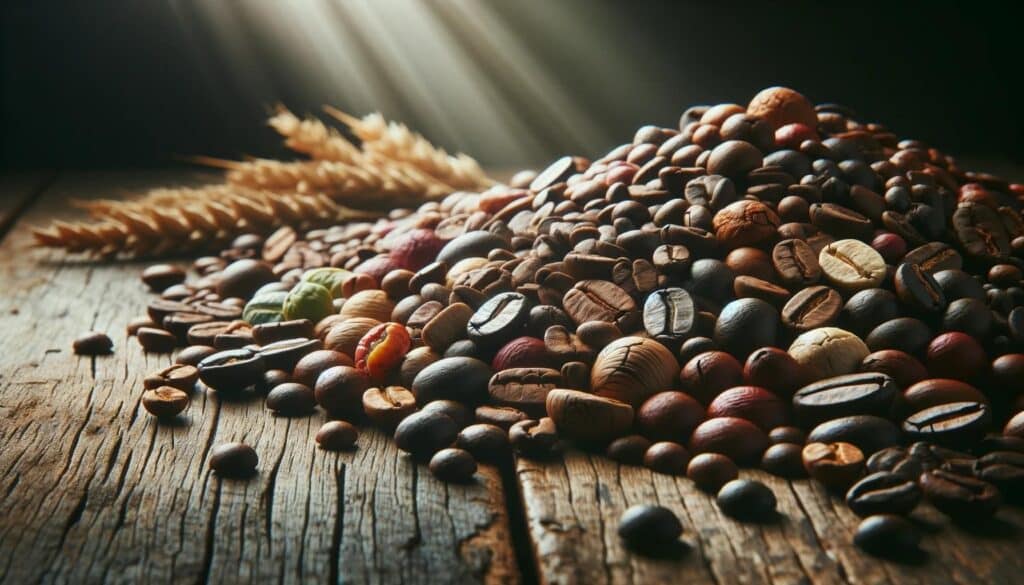
To truly appreciate the diversity of coffee, one must start at the source: the coffee beans themselves. The type of bean, its origin, and the way it’s processed significantly impact the final taste of the coffee. Here, we delve into these fundamental aspects.
Types of Coffee Beans
- Arabica: Known for its sweet, soft taste and complex flavor profiles, Arabica beans are the most popular coffee beans worldwide, making up about 60-70% of the world’s coffee production. They are predominantly grown in Latin America and are usually found at higher altitudes, which contributes to the bean’s acidity and flavor diversity, often characterized by hints of fruit and sugar, with higher acidity compared to other types.
- Robusta: These beans are second to Arabica in terms of global popularity and are cherished for their strong, robust flavor and a higher caffeine content, which makes them more bitter. Robusta beans are typically grown at lower altitudes, primarily in Africa and Indonesia. They are often used in espresso blends for their rich, deep flavor and excellent crema.
- Liberica and Excelsa: These are lesser-known varieties, each with unique qualities. Liberica beans, grown primarily in Malaysia and West Africa, are praised for their unusual woody, smoky flavor with a slightly floral aroma. Excelsa, often grown in Southeast Asia, boasts a tart, fruity profile and is typically used to give blended coffees an extra flavor kick due to its distinctive attributes.
Coffee Bean Origins
- Overview of Coffee-Producing Regions: Coffee is predominantly grown in the equatorial band known as the “Bean Belt,” which includes parts of Central and South America, Africa, and Asia. Each region offers beans with distinct flavors and characteristics.
- How Climate and Soil Affect Flavor Profiles: The environment where coffee is grown—often referred to as “terroir” in the coffee and wine industries—plays a crucial role in shaping its taste. Factors such as altitude, temperature, and rainfall can drastically influence the chemical makeup of coffee beans, affecting their acidity, sweetness, and overall flavor profile.
Processing Methods
- Washed (Wet) Process: In this method, the fruit part of the coffee is removed before it is dried, typically resulting in a cleaner, brighter, and fruitier cup. This process is favored in areas with ample water resources.
- Natural (Dry) Process: Here, the coffee cherries are dried whole, without removing the fruit part. This method often imparts a sweeter, more robust flavor to the coffee but can also lead to more variability in the taste due to the extended contact between the fruit and the bean during drying.
- Honey and Other Hybrid Methods: Hybrid methods like the Honey process remove some, but not all, of the fruit before drying. The remaining fruit mucilage imparts a sweet, syrupy body to the coffee. This method, along with others like semi-washed, offers a balance between the washed and natural processes, leading to unique flavor combinations.
Understanding these foundational elements provides insight into the complex and varied world of coffee, setting the stage for further exploration into how these factors influence the brewing and enjoyment of coffee.
Roasting’s Impact on Flavor
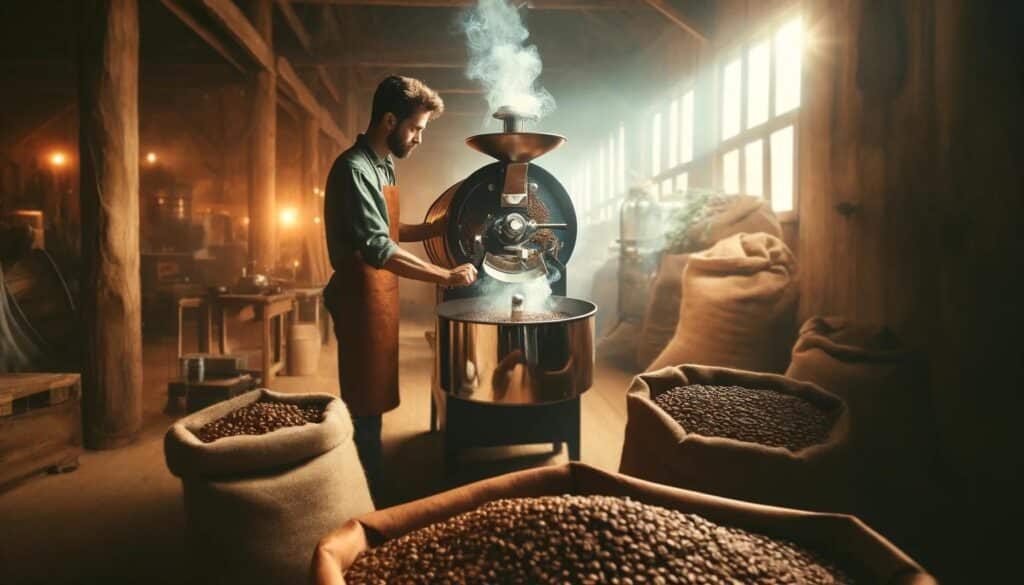
Roasting is a crucial step in the coffee production process that transforms the green coffee beans into the aromatic brown beans we recognize. This section explores how different roasting levels affect the flavor of the coffee and guides on selecting the appropriate roast for various brewing methods and personal preferences.
Roast Levels
- Light Roasts: Often called “cinnamon” or “first crack” roasts, light roasts are generally stopped soon after the first crack during the roasting process. These roasts retain most of the original flavors of the bean, which can be highly influenced by the bean’s origin (terroir). Light roasts are higher in acidity and have a toasted grain taste with pronounced fruity flavors. They typically have the highest caffeine content.
- Medium Roasts: This roast level is often referred to as the “American roast” because it is generally preferred in the United States. Medium roasts are brought to a temperature just after the first crack but before the second. They have a more balanced flavor, aroma, and acidity, with a slightly sweeter taste compared to light roasts and more body.
- Dark Roasts: These beans are roasted until after the second crack. Dark roasts have a shiny black appearance with an oily surface and a pronounced bitterness. The flavor of the roasting process is dominant, which can mask the original flavors of the beans. However, dark roasts also lower the acidity and have a decrease in caffeine content.
- How Roast Affects Acidity and Body: The level of roast has a significant impact on a coffee’s acidity and body. Lighter roasts tend to be more acidic and have a lighter body, which can enhance the bean’s natural flavors. As the roast becomes darker, the acidity diminishes, and the body becomes fuller, which may reduce the bean’s original character but increases richness and sweetness.
Choosing the Right Roast
- Matching Roast to Brewing Method: The choice of roast can greatly influence the outcome of the brewing process. For example, light roasts are generally preferred for methods that allow for a slower and more controlled extraction, such as pour-overs or AeroPress, which highlight their complex flavor profiles. Medium roasts are versatile and well-suited for a wide range of brewing methods, including drip machines. Dark roasts are ideal for espresso brewing, where their oils and rich flavors can withstand the intense extraction process.
- Personal Taste Preferences in Roast: Choosing the right roast can also be a matter of personal taste. Some coffee drinkers prefer the bright, acidic notes of a light roast, while others may favor the bold, rich flavors of a dark roast. Experimentation with different roast levels using the same bean can provide insights into how roasting influences flavor and help individuals discover their preferred balance of acidity, body, and roastiness.
Understanding the nuances of roasting can significantly enhance one’s appreciation of coffee and lead to better choices that suit individual taste and preferred brewing methods. This section not only helps in demystifying the effects of roasting on flavor but also empowers coffee enthusiasts to refine their palates and brewing techniques.
Brewing Methods

The way coffee is brewed can significantly influence its final taste. Different brewing methods extract the coffee’s flavors and compounds in distinct ways. This section details popular brewing techniques and provides guidance on how to match coffee types and roasts with the appropriate brewing methods to optimize the flavor.
Popular Brewing Techniques
- Espresso: This method uses high pressure to force hot water through finely-ground coffee, resulting in a concentrated shot of coffee. The hallmark of a good espresso is a rich, creamy crema on top — the golden, frothy layer that sits atop the coffee.
- French Press: Also known as a press pot, this immersion brewing method allows coarse-ground coffee to steep directly in hot water before being separated by pressing down a metal or plastic plunger through a mesh sieve. The result is a full-bodied coffee with a rich and robust flavor.
- Pour-over: This method involves pouring hot water over coffee grounds contained in a filter. Water drains through the coffee and filter into a carafe or mug. The pour-over technique allows the brewer to control the brewing time and the temperature, which can highlight the subtle nuances of the coffee’s flavor profile.
- Cold Brew: Unlike other brewing methods, cold brew is made by steeping coarse-ground beans in cold water for 12 to 24 hours. The resulting coffee is a smooth, mild, and less acidic concentrate that can be served cold, making it exceptionally refreshing during warmer months.
Matching Method to Coffee Type
- Which types of beans and roasts are best for each method?:
- Espresso is best with dark roasted beans that are robust enough to withstand the intense extraction without becoming overly bitter or acidic. Robusta or robust Arabica blends are commonly used.
- French Press works well with medium to dark roasts that have a richer and fuller body. The method’s immersion technique extracts deep flavors and oils, which suits beans with a bold profile.
- Pour-over is ideal for light to medium roasts, especially single-origin Arabica beans that can showcase their complex flavors, such as floral, fruit, or delicate notes.
- Cold Brew is versatile but generally best with medium to dark roasts. The cold extraction reduces bitterness, making even bolder, darker roasts taste smoother and sweeter.
- How brewing time and temperature affect the end result:
- Brewing Time: Longer brewing times can extract more flavors but also increase bitterness. Each method has an optimal brewing time that balances these aspects — shorter for espresso, longer for cold brew.
- Temperature: Generally, hotter water extracts flavors and compounds more quickly, which is ideal for espresso and pour-over. For cold brew, the cold water extracts fewer acids, resulting in a smoother beverage. The temperature can greatly influence the acidity and overall flavor profile, with cooler temperatures favoring a smoother, less acidic cup.
Understanding these nuances allows coffee enthusiasts to better navigate the vast world of coffee brewing, tailoring their brewing method to their preferred taste profile and the characteristics of their chosen coffee beans. This knowledge ultimately enhances the coffee experience, making each cup more enjoyable and suited to individual preferences.
The Influence of Grind Size
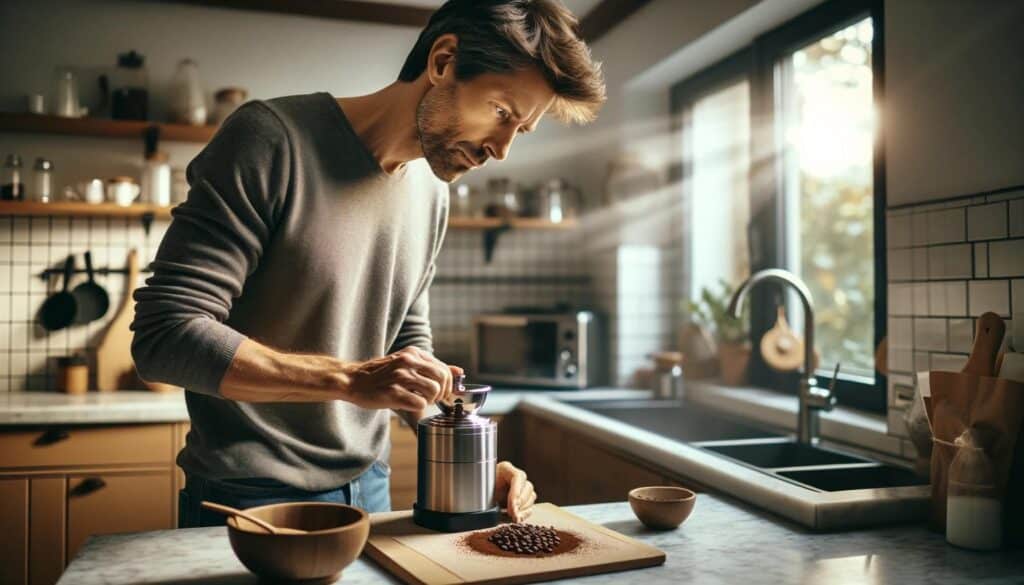
Grind size is a critical factor in coffee brewing, as it directly affects the surface area of coffee that comes into contact with water. This section explores the importance of grind consistency, recommends specific grind sizes for popular brewing methods, and advises on selecting the right equipment to achieve the best grind at home.
Understanding Grind Consistency
- The Importance of Grind Size for Different Brewing Methods: The grind size can determine the rate of extraction and the flavor profile of the coffee. Too fine a grind can lead to over-extraction, resulting in a bitter taste, while too coarse a grind can under-extract, leading to a weak, sour cup.
- Recommended Grinds for Popular Brewing Methods:
- Espresso: Requires a very fine grind almost like powdered sugar to achieve the high resistance necessary for the pressurized water to extract the coffee properly.
- French Press: Best with a coarse grind, which looks similar to sea salt, to prevent fine particles from passing through the press filter and into the cup.
- Pour-over: Typically uses a medium to medium-fine grind, similar in texture to table salt or sand, allowing for a balanced extraction during the pour-over process.
- Cold Brew: Uses a very coarse grind, akin to peppercorns, to ensure a slow extraction process, avoiding over-extraction and bitterness in the prolonged immersion.
The Right Equipment
- Choosing Grinders: Burr vs. Blade:
- Burr Grinders: These are generally preferred by coffee aficionados because they provide a more consistent grind size and control over the grind’s fineness. Burr grinders work by crushing the beans between two surfaces, one stationary and the other rotating, with adjustable settings to vary the grind size.
- Blade Grinders: Less expensive than burr grinders, blade grinders use a spinning blade to chop coffee beans. The grind consistency can be less uniform, often resulting in a mix of coarse and fine particles. The heat generated by the blades can also affect the coffee’s flavor.
- Tips for Achieving Consistent Grind at Home:
- Invest in a good-quality burr grinder for more control and consistency.
- For blade grinders, pulse in short bursts instead of running continuously to avoid overheating the coffee.
- Shake the grinder during short bursts to help achieve a more even grind when using a blade grinder.
- Regularly clean your grinder to ensure consistent performance and to prevent old grinds from contaminating fresh batches.
Understanding and managing grind size and consistency can dramatically influence the taste and quality of brewed coffee. By choosing the right grinder and understanding the appropriate grind settings for various brewing methods, coffee lovers can enhance their brewing technique and enjoy a better cup of coffee every time.
The Role of Water in Coffee Brewing

Water is the most abundant ingredient in coffee brewing, making up about 98% of the beverage. Its quality and temperature play pivotal roles in the extraction of flavors from coffee grounds. This section delves into how different aspects of water can influence the brewing process and the overall taste of coffee.
Water Quality
- How Water Quality Affects Taste: The mineral content, pH level, and purity of water can dramatically affect the flavor of coffee. Water that is too hard (high in minerals like calcium and magnesium) can lead to over-extraction, making the coffee taste harsh and bitter. Conversely, water that is too soft may under-extract, resulting in a flat, underwhelming cup. Impurities and odors in tap water can also alter the intended flavors of the coffee.
- Tips for Choosing the Right Water:
- Use filtered or bottled water if your tap water is heavily chlorinated or has strong odors or flavors.
- Consider testing your water for hardness and use a filtration system that can adjust the mineral content to an optimal level.
- Aim for a balance in mineral content to enhance flavor extraction without overpowering the coffee. Generally, a total dissolved solids (TDS) content of around 150 parts per million is considered ideal for brewing.
Water Temperature and Coffee Brewing
- Ideal Temperatures for Different Brewing Methods: The temperature of water used for brewing can affect how much and what types of flavors are extracted from the coffee grounds.
- Espresso: Typically uses water at about 195°F to 205°F (90°C to 96°C). The high temperature helps extract coffee quickly under pressure, creating a rich and bold flavor.
- French Press: Best brewed with water just off the boil, around 200°F (93°C). This allows for full extraction during the immersion, capturing deep flavors and oils without extracting too much bitterness.
- Pour-over: Ideal at 195°F to 205°F (90°C to 96°C). This range helps to extract the nuanced flavors of the coffee, especially the delicate notes present in light to medium roasts.
- Cold Brew: Brewed with cold water, usually at room temperature or chilled. This method does not extract the acids and bitter compounds typically extracted at higher temperatures, resulting in a smoother, sweeter coffee concentrate.
By understanding and controlling the quality and temperature of water, coffee enthusiasts can significantly improve their brewing process, leading to a more enjoyable cup of coffee that fully expresses the unique characteristics of the beans. Adjusting these factors allows for greater precision in crafting the perfect brew.
Experimenting with Additives
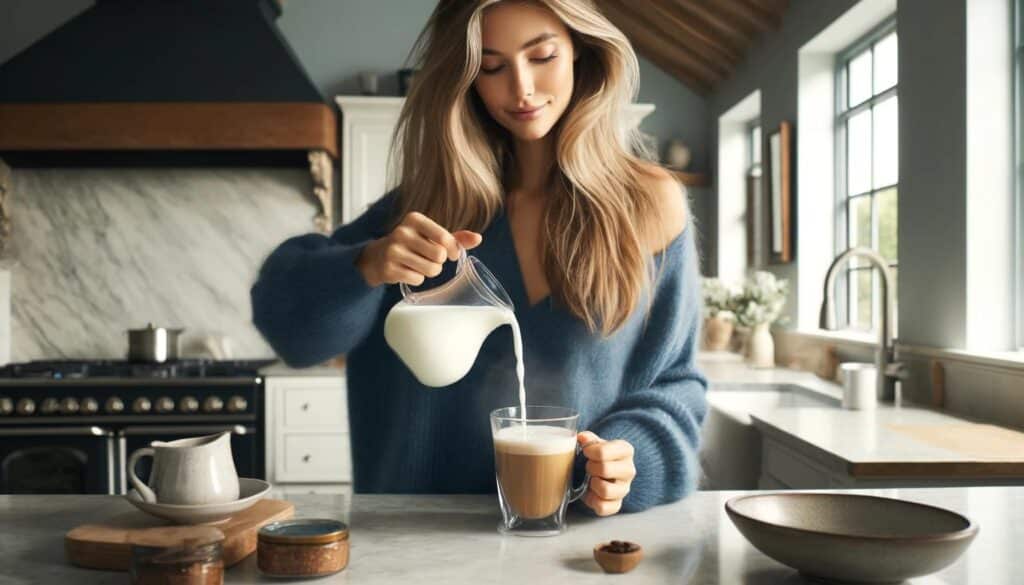
While coffee can be thoroughly enjoyed on its own, additives can either enhance its natural flavors or introduce new dimensions to the drink. This section explores traditional as well as specialty and alternative additives, providing insights into how each can modify the coffee experience.
Traditional Additives
- Milk, Sugar, Syrups, and Creams: These are among the most common additives used to alter the flavor profile of coffee.
- Milk: Softens the acidity and adds a creamy texture. Different fats and consistencies (whole, skim, half-and-half) can alter the coffee’s body and flavor saturation.
- Sugar and Syrups: Help to counteract coffee’s natural bitterness. While sugar enhances sweetness directly, flavored syrups (such as vanilla, caramel, or hazelnut) add both sweetness and flavor, creating a more complex beverage.
- Cream: Adds richness and body, muting some of the inherent flavors of the coffee but introducing a silky texture that many find pleasurable.
- How Additives Can Enhance or Mask Coffee Flavors:
- Additives can enhance certain flavors in coffee; for example, a dash of cream can make a dark roast less harsh and more palatable. Conversely, they can also mask undesirable flavors, such as excessive bitterness or sourness in improperly brewed coffee. However, excessive use of additives might overshadow the unique characteristics of high-quality coffee beans.
Specialty and Alternative Additives
- Spices like Cinnamon and Nutmeg: These spices can add a warm, aromatic dimension to coffee without overwhelming its natural flavors. Cinnamon can reduce the perceived bitterness and add a natural sweetness, while nutmeg offers a nutty, subtly sweet flavor complexity.
- Non-dairy Milks and Health-focused Alternatives:
- Non-dairy Milks: Options like almond, soy, oat, and coconut milk provide different textures and flavors. For example, oat milk is often praised for its creamy texture and slight sweetness, making it a popular choice for coffee drinkers looking to avoid dairy.
- Health-focused Alternatives: Additives like MCT oil, collagen powders, or CBD infusions are becoming popular for their purported health benefits. MCT oil can add a smooth texture and may help with sustained energy, whereas collagen powders are favored for health benefits like improved skin and joint health.
Experimenting with different additives can greatly personalize the coffee experience, allowing drinkers to tailor their brew to their specific taste preferences and dietary needs. Whether enhancing the natural flavors of the coffee or introducing entirely new ones, the world of coffee additives offers endless possibilities to explore.
Conclusion
Determining the “best” coffee is a journey as complex and varied as the beverage itself. Throughout this exploration, we’ve seen how the choice of beans, their roast, the brewing method, water quality, grind consistency, and even the choice of additives can all dramatically influence the taste and enjoyment of coffee. Each variable offers a new avenue for discovery, highlighting the rich diversity available in the world of coffee.
Coffee lovers are encouraged to experiment and personalize their coffee experiences. Whether it’s trying different brewing techniques, exploring new bean origins, adjusting the grind size, or experimenting with various additives, each choice allows for a deeper understanding and appreciation of coffee. This process of exploration not only enhances the personal enjoyment of coffee but also broadens one’s palate and appreciation for this beloved global beverage.
Embracing the diverse world of coffee involves recognizing that the perfect cup is a personal discovery, one that may evolve with tastes and preferences over time. Coffee is not just a drink, but a passion that invites curiosity, experimentation, and enjoyment. As we continue to explore, let us savor each sip, appreciating the unique stories and processes that bring this magical elixir from the farm to our cups. So brew, taste, and enjoy the boundless possibilities that coffee presents.
Frequently Asked Questions About Coffee
1. What is the difference between Arabica and Robusta coffee beans?
Answer: Arabica beans are known for their sweet, soft taste and complex flavor profiles, often containing hints of fruit and sugar with higher acidity. They are typically grown at higher altitudes and are the primary choice for specialty coffees. Robusta beans, on the other hand, have a stronger, more robust flavor, with a higher caffeine content and a grainier, nuttier taste. They are easier to grow and more disease-resistant, making them a popular choice for commercial coffee blends.
2. How does roast affect the flavor of coffee?
Answer: The roast level of coffee beans affects their flavor, aroma, body, and acidity. Light roasts tend to be more acidic and retain more of the original flavors of the bean, which can be fruity or floral. Medium roasts have a more balanced flavor and aroma, making them suitable for a wider range of palates. Dark roasts feature a pronounced bitterness and a fuller body, with the roasting process often overshadowing the original flavors of the beans.
3. What is the best temperature for brewing coffee?
Answer: The ideal brewing temperature for coffee is generally between 195°F and 205°F (90°C to 96°C). This temperature range is optimal for extracting the full flavor from the coffee beans without extracting undesirable bitter compounds. Cold brew coffee, however, uses cold water and requires an extended brewing time to achieve a smooth, mild flavor.
4. What type of water should I use for brewing coffee?
Answer: The quality of water is crucial in brewing a good cup of coffee. It is best to use filtered or bottled water with a balanced mineral content. Hard water can lead to over-extraction and a bitter taste, while soft water might under-extract, leading to a weak coffee. Aim for water with a total dissolved solids (TDS) content of around 150 parts per million for the best results.
5. Can the grind size really affect the taste of my coffee?
Answer: Yes, the grind size is critical in coffee brewing. A finer grind increases the surface area exposed to water, which can lead to a stronger and more bitter flavor due to over-extraction. Conversely, a coarser grind results in under-extraction, making the coffee taste weak and sour. Each brewing method requires a specific grind size to optimize flavor extraction.
6. What are some good additives to enhance my coffee experience?
Answer: Traditional additives like milk, sugar, and syrups can change the taste and texture of your coffee. For a different twist, try spices like cinnamon or nutmeg to add warmth and complexity. Non-dairy alternatives like oat, almond, or coconut milk can also provide unique flavors and textures. Experimenting with different additives is a great way to customize your coffee to your taste preferences.
7. How can I make my coffee less bitter?
Answer: To reduce bitterness, you can adjust your brewing method, such as reducing the brewing time or lowering the water temperature. Using a coarser grind can also help prevent over-extraction, which is a common cause of bitterness. Additionally, adding a small amount of salt to the coffee grounds before brewing can help neutralize some of the bitterness.
8. Is it better to grind coffee beans right before brewing?
Answer: Yes, grinding coffee beans right before brewing is generally recommended to preserve the freshness and flavor of the beans. Pre-ground coffee can lose its flavor and aroma over time due to oxidation, so fresh grinding helps maintain the beans’ essential oils and flavors for a more flavorful cup of coffee.
